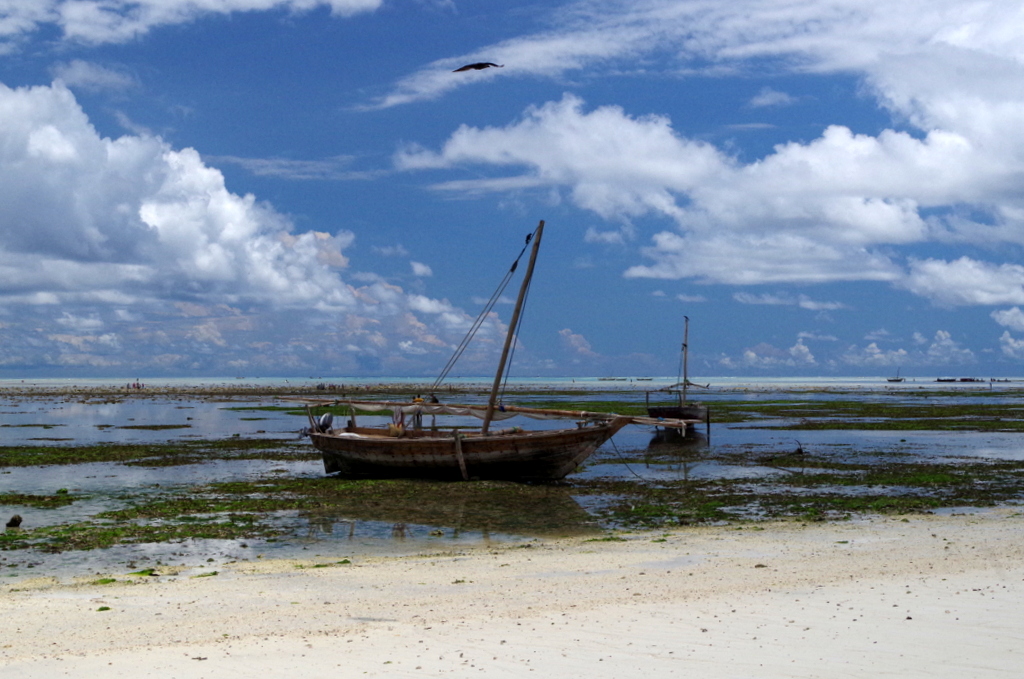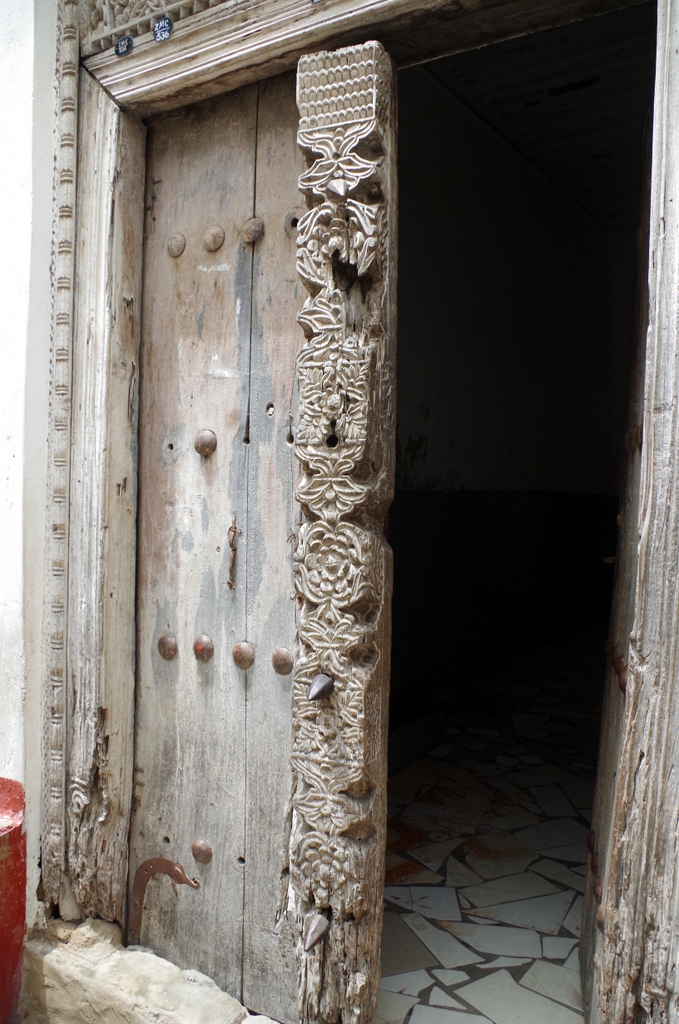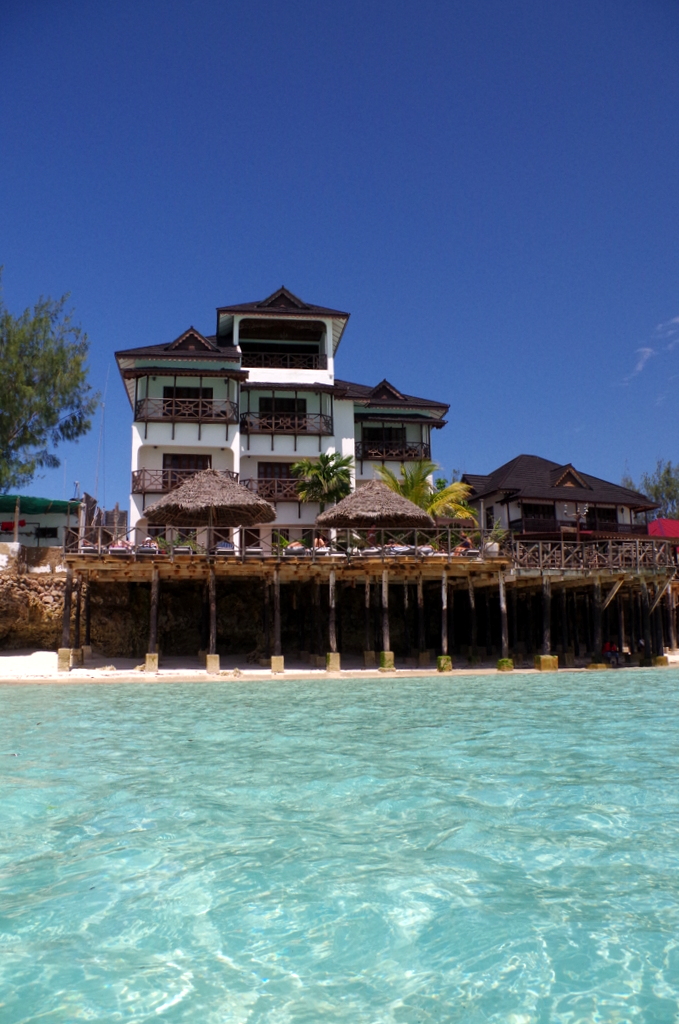For Spring Break this year Amy and I headed to Zanzibar. We weren't that familiar with the island, but it kept coming up as we searched for an easy and affordable getaway from the U.A.E. We decided to give it it a shot, and it turned out to be everything we hoped for, and a lot more.
We flew from Dubai to Nairobi, and then on to Zanzibar. The trip started with a nice surprise as our connection flew right past Mount Kilimanjaro. We landed at ZNZ during a torrential downpour which reminded us that visiting during the rainy season may not have been the best plan. As soon as we were out of the plane and in line for customs it hit us that we were in Africa. Being in this foreign and impoverished land was an immediate reminder of what a privileged life we, and many American's, are able to live.
We quickly learned that Africa has its own identity, its own way of doing just about everything. There was a billboard that I saw all over the island. It read “T.I.A. – This is Africa”. It made me laugh because I thought this was just a catchy line that they had come up with in “Blood Diamond”, but no… this is a common saying in Africa.
We spent our first four days in Stone Town, the capital of Zanzibar. Stone Town is not a beautiful city. It does not feel warm, inviting, or safe. As a matter of fact, it is one of the least safe (feeling) places I've visited. But it is interesting, it is intriguing. The town is an absolute labyrinth of passages and corridors that were obviously created long before cars were even a thought.
The buildings look as if they were piled on top of one another, almost like a shanty town built out of the coral bed. The narrow passages and lack of cohesive architecture lead to a claustrophobic feeling that is only increased by the number of people moving, sometimes racing on motorbikes, all around you. The only way to really orient yourself is to use the incredibly ornate, hand carved doors as a guide.
Our luck improved almost immediately because the rain that met us at the airport departed with the plane. We wound our way through the maze that is Stone Town and found dinner at the Emerson Spice Hotel. Inside these old coral buildings is where you'll find the true beauty of the city. The homes and hotels of Stone Town have such a unique and historic feel to them that it's hard to describe. Zanzibar spent hundreds of years under Persian rule, and then as a Sultanate of Oman. This has lead to an architecture (and people) that is a mixture of Arabic and African influences. The buildings have narrow floors with high ceilings wrapped around central court yards that let in light and air.
The rooftop restaurant at Emerson Spice was a nice departure from the passages below. It gave us an opportunity to see Stone Town as a city, a not just a series of connected corridors.



After a day of exploring Stone Town we headed out with a tour group called Safari Blue. The group offers snorkeling over some of the best coral reefs I've seen since Fiji.


In addition they stop on a private island for a lobster barbecue that was worth the cost alone. Once again rain loomed over our day, but once again we lucked out and were able to enjoy the rain from a distance. Either way, the giant hermits crabs didn't seem to care.
The following day we headed to the spice markets and the Jozani National Park. We were given a tour of Mr. Spice's (Abeid's) Spice Farm by some of the nicest and genuinely interesting people. Zanzibar, and the rest of the eastern coast of Tanzania, are know as the Spice Islands, and were prominent producers of spices during colonial times. The farm we toured produces varieties of spices that originate around the world, but proliferate on Zanzibar.
After touring the spice farm we headed the Jozani National Park to see the Red Colobus monkey's that are indigenous to Zanzibar.
As cute as these guys are, you apparently don't want them as neighbors. They have poisonous saliva that slowly kills the trees and vegetation that they much on all day.
On our forth day we left Stone Town and headed to Nungwi. Nungwi is a small fishing village on the northern coast of Zanzibar that just happens to have some of the most spectacular beaches I've ever seen. Because of the massive tidal changes the beaches grow from non-existent at high tide to football field lengths at low tide.
I still can't quite explain why the tides in Zanzibar are so high, but if you look at the following picture taken about two hours after low tide, the high tide mark can be seen on the deck piers where the color changes from white to black. Notice the two guys sitting on the base of one of the piers to the right?... that's a high tide! Oh yeah... and what room did we stay in? You guessed it, the penthouse!
Here are some images of the beach at low tide...




Nungwi is already an international beach destination, but what sets it apart from other beaches that we've visited is that it's still a working fishing village. Every morning you'll see the local fisherman launching their dhows and ngalawa's right next to the tourists taking a sunrise dip.

We finished our trip with a sunset cruise on a dhow.


The sunset could not have been more beautiful... TIA.































